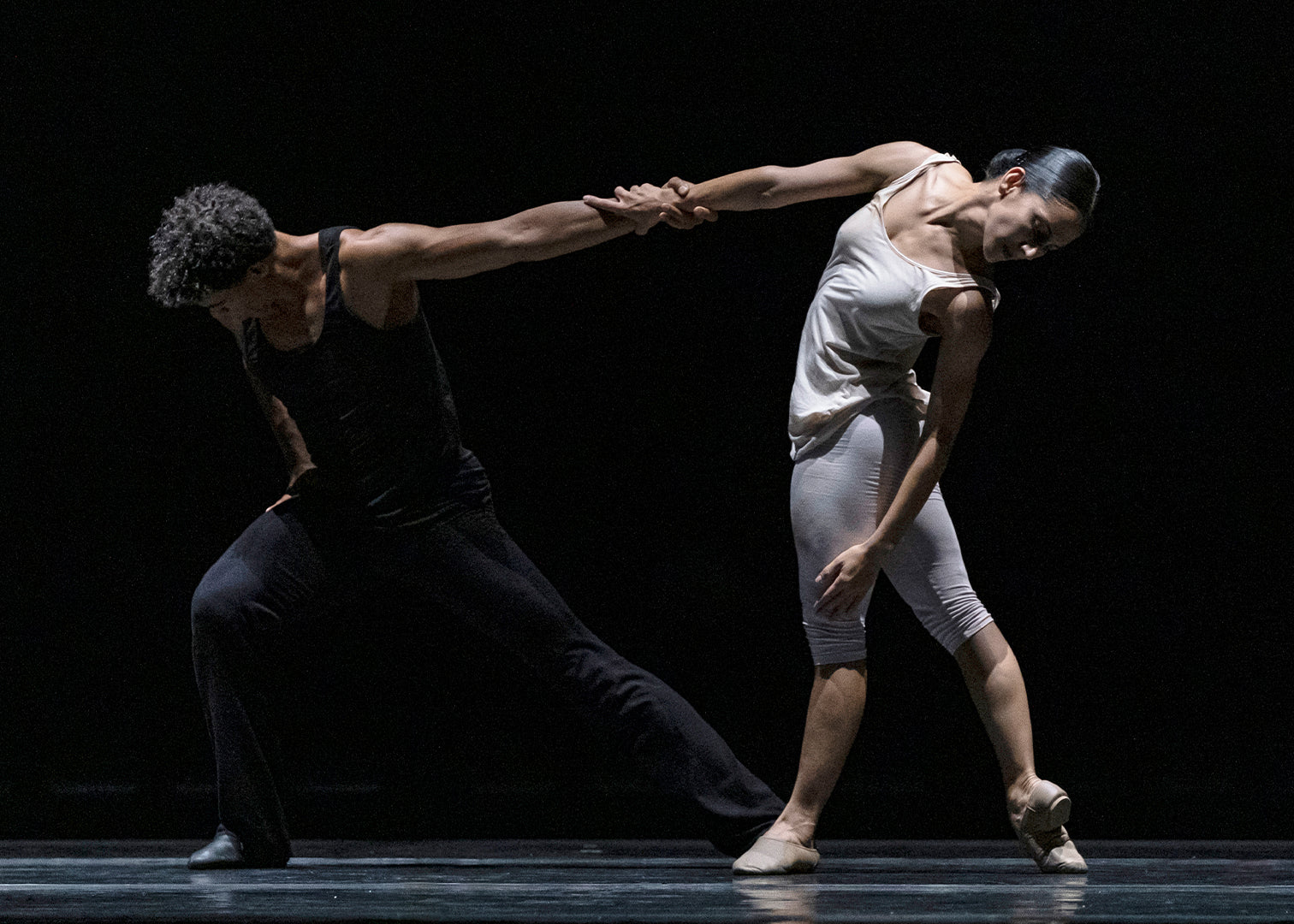Bourne’s version departs from Golding’s in a few key ways, most notably in its setting: here it’s not a desert island but a deserted theatre that claims the characters, an inspired change that sees scaffolding stand in for cliff faces and racks of costumes for jungle bush. It’s also modern day in Bourne’s world, though it’s worth noting the only sign of this is a quick moment in which the newly stranded kids fruitlessly consult their mobile phones for a signal. That this modification has virtually no impact on the story at large no doubt underscores its timelessness.
One of the show’s greatest strengths is its seamless integration of professional and rookie dancers. The New Adventures blokes take on the primary roles—including Ralph, Jack and Piggy—while the younger lads form the ensemble, their adolescence boosting the introductory characterisation of the troupe as naïve and uncorrupted. The latter faction moves with purpose and precision, and their presence enriches the show deeply, the littlest ones’ in particular (I defy anyone not to be charmed by a rowdy gaggle of uniform-clad 12-year-olds scampering about). The professionals, too, are a treat: Sam Plant is a fine Piggy, all crooked glasses and injured expressions, while Sam Archer offers a sturdy turn as democratic Ralph. It’s Danny Reubens’ Jack who steals the show, however: his unruly deportment and wild eyes expertly toe the line between intoxicating and abhorrent.
Bourne punctuates swathes of improvisation (playing, exploring and so forth) with brief bursts of unison choreography, reserving the more complicated manoeuvering for pivotal scenes like the pig hunt. (The ‘pig’ here is a young boy in one of the theatre’s many abandoned costumes, and his fate upon capture is left deliberately ambiguous, though his mask is seized and deemed the titular Lord of the Flies.) A boisterous rugby game towards the beginning of the show—which sees line after line of boys leap and pivot in tandem—deftly captures the carefree mood initially surrounding the characters’ desertion, while the climactic manhunt for Ralph—a frantic flash of dashes and turns—epitomises their surrender to paranoia and primitive barbarism.
This descent from civil to savage is incremental and laudably organic: a squabble over rations sparks a food fight in the first act, and it’s not long before shirts come off and Rambo-style headbands are donned. From here, things devolve into full feral swing: before you know it, stomping and spear-throwing have become primary modes of communication, and there’s more than a whiff of bloodlust in the air. The crashing stage lamp that kills Piggy ushers in a momentary pause for reflection, but chaos quickly resumes when Jack dons a floor-length coat and assembles his tribe for a terrifying war dance—ironically the show’s most elegant phrase.
As is the case with the book, the production’s conclusion is abrupt: a soldier discovers the boys, and they immediately abandon their brutish behaviour to follow him back to civilisation. That this feels even remotely like a shame is a testament to Bourne’s eye for pacing: he knows just how to draw us in, and he knows just when to twist the knife.









comments